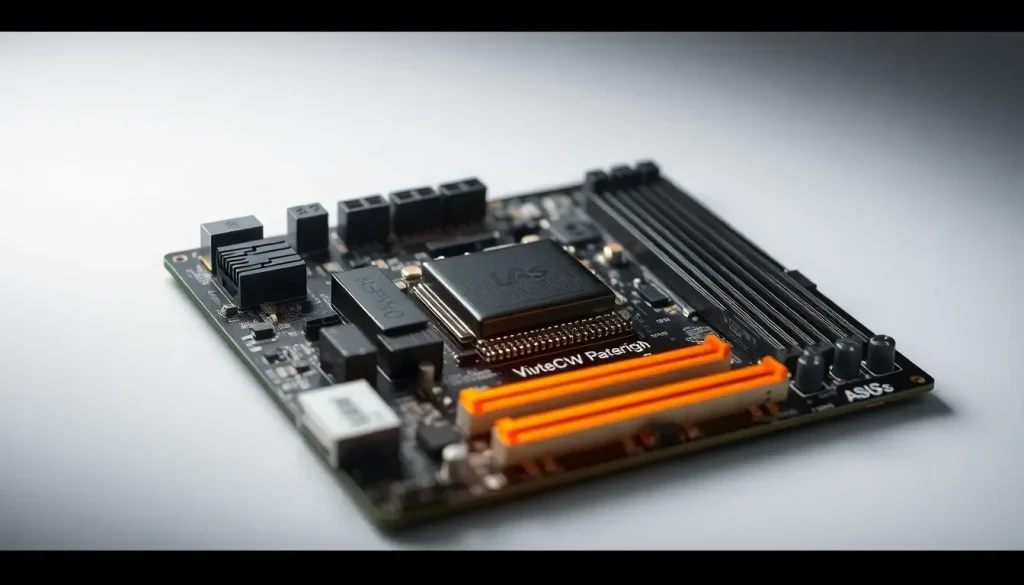ASUS adds shunt resistors to BTF motherboards for real-time CPU energy monitoring

In the world of high-performance computing, the importance of monitoring power consumption cannot be overstated. With the recent issues surrounding NVIDIA’s RTX 50 series graphics cards, which have been plagued by overheating problems leading to hardware failures, manufacturers are now prioritizing energy monitoring features in their products. ASUS has taken a significant step forward in addressing these concerns by integrating Shunt resistors into their BTF motherboard series, allowing real-time monitoring of power supply to CPUs. This innovation marks a pivotal shift in how we safeguard our expensive hardware investments.
This article delves into the advancements brought by ASUS in their BTF series motherboards, exploring how the integration of Shunt resistors enhances both performance and safety. We will also look into the implications of these changes for gamers and professionals alike, providing a comprehensive overview of the features and benefits associated with this new technology.
ASUS leads the way with real-time amperage monitoring in its BTF motherboards
ASUS has revolutionized motherboard design with its BTF line by repositioning all power connectors to the back of the PCB. This innovative approach not only improves the aesthetic appeal of the PC setup by concealing cables but also enhances airflow within the case, promoting better cooling and overall performance.
The BTF series eliminates the need for the traditional 12V-2x6 power connector visible on the PCB. Instead, ASUS relies on its proprietary GC-HPWR standard, which directly connects the graphics card to the motherboard, functioning similarly to a traditional PCIe slot.
This configuration not only alleviates potential thermal issues with the graphics card but also provides physical and electrical stability through a secondary slot. The real innovation, however, lies in the integration of Shunt resistors, which play a crucial role in monitoring power consumption and ensuring system reliability.
The significance of Shunt resistors in ASUS motherboards
Shunt resistors serve as calibration tools that allow for precise measurement of electrical current. ASUS has installed three exclusive Shunt resistors around the 12V-2x6 power connector on the ROG X870E Hero BTF motherboard, ensuring accurate monitoring of power delivery to the CPU. This design choice reflects ASUS's cautious approach towards NVIDIA's RTX 50 series, emphasizing their commitment to user safety.
Key features of the Shunt resistors include:
- Enhanced Monitoring: Real-time tracking of power consumption for improved system awareness.
- Increased Safety: Early warnings about potential overload situations, preventing hardware damage.
- Reliability: Provides users with confidence in their hardware setup.
How the Power Detector+ enhances user experience
ASUS has updated its Tweak III software to incorporate the new Power Detector+ feature, which now monitors power consumption not just for graphics cards but also for motherboards equipped with Shunt resistors. This real-time feedback is invaluable to users who want to keep their systems running optimally.
The key aspects of Power Detector+ include:
- Multi-Channel Monitoring: The INA3221 integrated circuit can measure three current channels simultaneously.
- Comprehensive Insights: Users can monitor the performance of six voltage lines on the 12V-2x6 connector.
- User-Friendly Interface: Simplifies the process of keeping track of power usage.
ASUS BTF motherboard series: A closer look at the technology
The BTF series motherboards not only provide a unique aesthetic appeal but also feature cutting-edge technology that caters to the needs of gamers and professionals alike. With a focus on improving power efficiency and system stability, these motherboards are setting a new standard in the industry.
Some notable specifications of the BTF motherboards include:
- Support for the latest CPUs: Compatible with AMD AM5 and Intel platforms.
- Advanced cooling solutions: Enhanced thermal management systems for optimal performance.
- Robust connectivity options: Multiple USB ports, high-speed networking capabilities, and PCIe expansion slots.
This technological advancement is a response to the growing demand for higher power consumption in modern CPUs and GPUs, ensuring that users can fully utilize their hardware without the risk of overheating or failure.
What does the future hold for motherboard technology?
As the demand for more powerful computing hardware continues to rise, manufacturers like ASUS are likely to keep innovating in the realm of power management. The integration of technologies such as Shunt resistors and advanced monitoring tools signals a shift towards a more safety-conscious approach in motherboard design.
Looking ahead, we can expect:
- Further Integration of Monitoring Tools: More manufacturers will adopt similar technologies to ensure user safety.
- Enhanced User Interfaces: Software that provides detailed insights into power consumption patterns.
- Standardization of Power Management Features: An industry-wide approach to power monitoring will emerge, improving overall reliability.
By staying ahead of the curve, ASUS not only addresses current hardware issues but also paves the way for future developments in motherboard technology that prioritize performance and safety.
For those interested in a visual overview of the BTF motherboard line and its features, check out this video:
In conclusion, the integration of Shunt resistors in ASUS's BTF motherboards represents a significant leap forward in the realm of computer hardware. With real-time power monitoring and an emphasis on safety, ASUS is setting a new benchmark for the industry, ensuring that users can enjoy their high-performance systems without compromising on reliability.




Leave a Reply